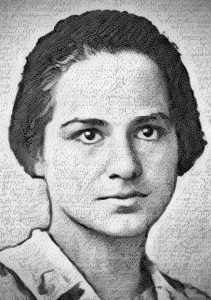This Month in Science and Medicine History: January 2025
by Leigh Ann Gardner (MSTP Senior Grants Manager)

January 1: Pioneering computer programmer and mathematician Grace Brewster Hopper died on January 1, 1992. Born in 1906 in New York City, she received her undergraduate degree from Vassar College and received a PhD in Mathematics from Yale University in 1934. Hopper began her career as a professor at Vassar College but took a leave of absence in 1943 to join the U.S. Naval Reserve (Women’s Reserve). Her work in the Navy during World War II was top secret, as she (along with others) worked on computing rocket trajectories, calibrating minesweepers, and creating range tables for anti-aircraft guns. Following the war, she remained a computer programmer, believing that programming should be simplified by using an English-based language rather than symbols for programming. In 1954, she was part of the team that released FLOW-MATIC, the first programming language to use word commands. She was integral in creating the COBOL language, a machine-independent programming language. She remained in the Naval Reserves during this time, becoming a Rear Admiral before retiring from the US Naval Reserves at the age of 79. You can read more about her trailblazing life here. You can also access a transcript of an oral history interview with her from 1980 here.

January 6: The first adult human-to-human heart transplant in the United States occurred on January 6, 1968, at the Stanford University School of Medicine. Performed by Dr. Norm Shumway, the recipient was a 54-year-old man, and he received the heart of a 43-year-old man. Although the initial transplant was successful, the patient developed complications and only lived for 15 days following the procedure. At the time, this successful transplant created enthusiasm among heart surgeons for transplant, although the high patient death rate quickly made this a controversial field. Due to this, Stanford was the only center to perform heart transplants for a decade, and he and others continued to research the field. In 1980, he was the first to introduce using cyclosporine, an immunosuppressive drug, in the procedure. Shumway remained at Stanford until his retirement in 1993. You can learn more about early heart transplants here, and you can learn more about Dr. Norm Shumway here.

January 14: Biochemist Rolla Neil Harger, known for his invention of an early breathalyzer, which he called a Drunkometer, was born on January 14, 1890. After receiving his PhD from Yale University in 1922, he joined the faculty at the University of Indiana School of Medicine as an assistant professor in biochemistry and toxicology. His research focused on poisons, ether, and alcohol, and in 1931, he invented the Drunkometer, which tested alcohol intoxication levels. The devise used a balloon to collect a person’s breath, which was mixed with a chemical solution which changed color in the presence of alcohol. Although he patented the device in 1936, he gave the patents to the Indiana University Foundation and did not profit from his invention. During the course of his career, he chaired the Department of Biochemistry, advocated for the passage of laws regarding drinking and driving, testified as an expert witness across the country, and taught breath alcohol testing. You can learn more about Harger’s life and invention here.

January 20: Born on January 20, 1857, Russian psychiatrist and neurologist Vladimir Bekhterev founded the field of psychoneurology in Russia. In addition to working as a professor and head of a clinic, Bekhterev identified 19 new forms of disease, including ankylosing spondylitis, and he also identified 15 new reflexes. His study of brain structure led a German professor of anatomy, Friedrich Kopsch, to declare, “There are only two persons who know the anatomy of the brain perfectly—God and Bekhterev.” He founded the first Russian journal devoted to nervous diseases and published widely. In 1927, he was summoned to the Kremlin to examine Joseph Stalin, who he may have diagnosed (and disclosed the diagnosis to others) as paranoid. Bekhterev died suddenly the next day, and some historians believe he was poisoned. After his death, his name was removed from Russian textbooks and journals and one of his sons was exiled. His reputation was rehabilitated in the 1970s. You can learn more about his life and accomplishments here and here.

January 27: Austrian physicist Marietta Blau, who developed photographic nuclear emulsions used to image and measure high energy nuclear particles, dies on January 27, 1970. Born in Austria in 1894, she received her PhD in physics and mathematics from the University of Vienna in 1919. Her research focused on a photographic method of particle detection, and she was the first scientist to use nuclear emulsions to detect neutrons. She faced great discrimination in her career both as a woman and as someone of Jewish descent, and she was forced to flee Austria in 1938 after the country was annexed by Nazi Germany. This led to a significant break in her research, as she was forced to leave her lab books and research materials behind. Albert Einstein, a friend of hers, helped her find employment in Mexico City; in 1944, she moved to the United States. She was twice nominated for a Nobel Prize in Physics, and in 1950, the prize went to Cecil Powell, who used Blau’s methods but did not credit her. Her later years were marked by difficult health, caused in part by radiation exposure. You can read more about Blau and her life here and here.
Please acknowledge the Vanderbilt University MSTP Program if you share this information.
